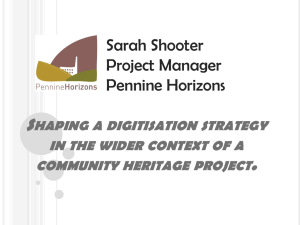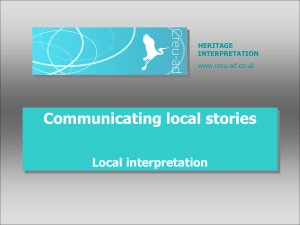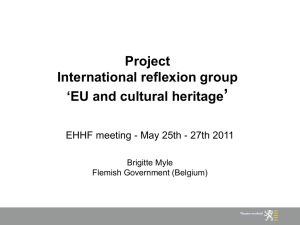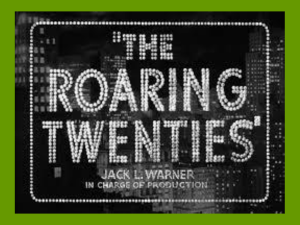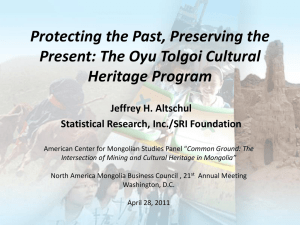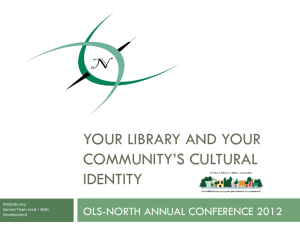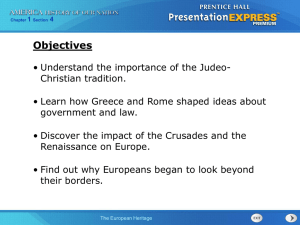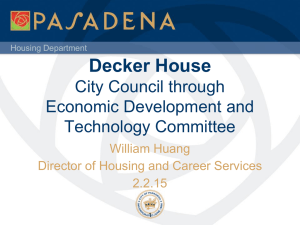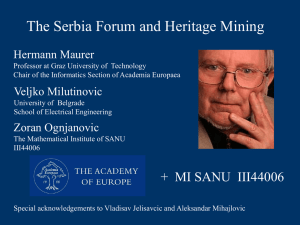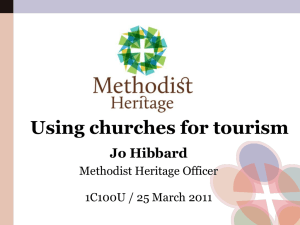“United in diversity” Analyzing the rhetoric of unity and
advertisement
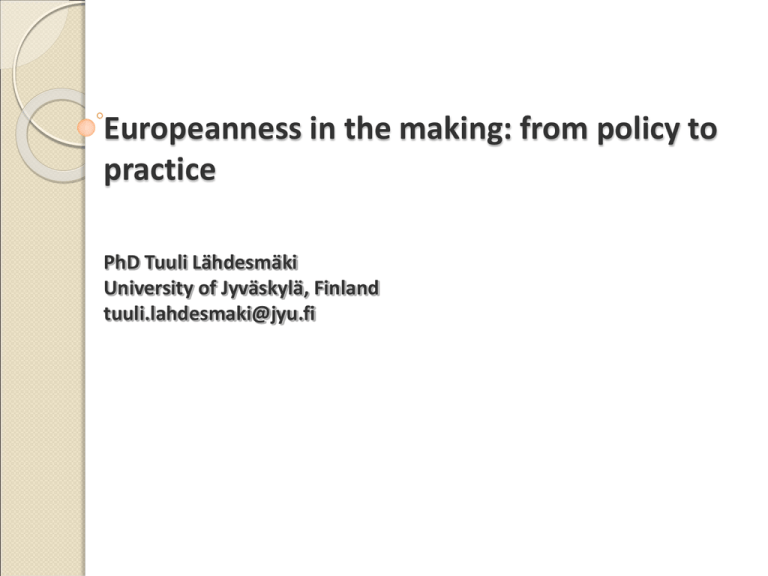
Europeanness in the making: from policy to practice PhD Tuuli Lähdesmäki University of Jyväskylä, Finland tuuli.lahdesmaki@jyu.fi Question: How is the concept of European cultural identity produced in European cultural policy, and what kind of cultural hierarchies and ideologies are included to this production? Material : the Treaty of Lisbon (2008), the European Agenda for Culture (2007), the EU's decisions on ECC (1999, 2006), the Guide for cities applying for the title of European Capital of Culture (2009). Method: discourse analysis (N. Fairclough) Key concept: cultural identity. It refers to common historical experiences and cultural codes, which are being repeated in communities through various myths, narratives and symbols. Cultural identities are created through a constant dialogue, negotiation and contest of similarity and difference, sameness and distinction. (S. Hall, H. Bhabba) Discourses in the making of European cultural identity . Discourse of unity: - outlines some common and shared elements as a base for European cultural identity - refers to the continuity of history, the legacy of the past and old traditions - the present-day is seen descending form the ‘Great Past’, which on one hand has cultivated the present state of the common culture, and on the other hand obliges to foster the history of the common culture . Discourse of diversity: - multifaceted variety of cultures as the main character of European cultural identity - the European cultural identity as manifold and plural - Europeanness as a civic identity . Discourse of unity and diversity: - Europeanness is seen to be characterized by the plurality of different cultural units and features, but these cultures are also believed to be connected with some underlying common elements > Pan-Europanist point of view to Europeanness The discourse of unity and diversity - characterizes the principle documents related to the EU´s cultural policy “The Community shall contribute to the flowering of the cultures of the Member States, while respecting their national and regional diversity and at the same time bringing the common cultural heritage to the fore.” (Treaty of Lisbon, article 151, 2008) “It [the ECC event] must underline the common features and the diversity of European cultures. This diversity also refers to the cultural input from all the resident populations of migrants or new arrivals from European countries and beyond.” (Guide for cities applying for the title of European Capital of Culture, 2009.) - the contents of ‘diversity’ are discussed with the terms of national and regional cultures in Europe and cultures of migrants and ‘new arrivals’ in Europe - the unity is encapsulated to the idea of a common heritage in which the national and regional cultures are seen from the pan-Europanist point of view Importance of heritage in the EU´s cultural policy . “drawing inspiration from the cultural, religious and humanist inheritance of Europe, from which have developed the universal values of the inviolable and inalienable rights of the human person, freedom, democracy, equality and the rule of law” (Treaty of Lisbon, article 1, 2008) “[the Union] shall respect its rich cultural and linguistic diversity, and shall ensure that Europe's cultural heritage is safeguarded and enhanced” (Treaty of Lisbon, article 3, 2008). ”aid to promote culture and heritage conservation where such aid does not affect trading conditions and competition in the Union to an extent that is contrary to the common interest” (Treaty of Lisbon, article 107, 2008). - cultural values are preceded by economic value Heritage in the European integration . “culture and its specificity, including multilingualism are key elements of the European integration process based on common values and a common heritage – a process which recognizes, respects and promotes cultural diversity and the transversal role of culture” (European Agenda for Culture, 2007) “this initiative is important both for strengthening local and regional identity and for fostering European integration” (Decision on European Capital of Culture program, 1999) “One of the key objectives of the event is to foster the knowledge which European citizens may have of one another and at the same time to create a feeling of belonging to the same community. In this respect, the overall vision of the event must be European, and the programme must have an appeal at European level.” (Guide for cities applying for the title of European Capital of Culture, 2009) European Capital of Culture program . ”[…] candidate cities must present the role they have played in European culture, their links with Europe, their place in it and their sense of belonging. They must also demonstrate their current participation in European artistic and cultural life, alongside their own specific features.” (Guide for cities applying for the title of European Capital of Culture, 2007) . “Each city shall organise a programme of cultural events highlighting the city's own culture and cultural heritage as well as its place in the common cultural heritage, and involving people concerned with cultural activities from other European countries with a view to establishing lasting cooperation” (Decision 1419/1999EC). . - The underlying strategy is to get the cities to present themselves as a part of the common European cultural identity - Through the ECC program, the cultural integration process of Europe seems to be generated as a bottom-up process starting from the cities and their local and regional institutions and the citizens themselves Conclusions - the discourse of unity and diversity is intertwined to the ideas of fostering the European cultural heritage on all discussed levels of the EU´s cultural policy - the cultural heritage is not only seen as bearing the legacy of separate European nations or regional groups, but manifesting the memory and heritage of all Europeans - heritage is sufficiently inclusive, while sustaining the sense of exclusivity necessary for making a collective European identity meaningful - stressing heritage sites is a seemingly neutral way to draw attention to the cultural unity and diversity of Europe: The rhetoric tends to emphasize the heritage of ‘original’ Europeans and the leading social strata, and draws attention from the cultural and social problems of the present day cultural diversity and status of ‘European’ to the variety and commonness of styles and aesthetics of the past time







